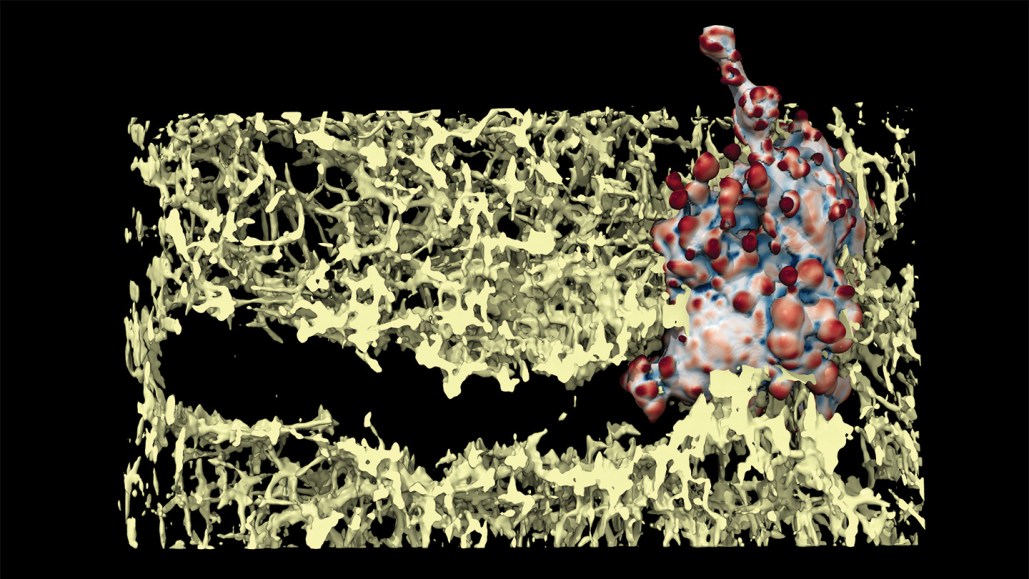"Certain Melanoma Cancer Cells Could Forcefully Navigate Through the Body"

Imagine tiny fists punching their way through your body.
For some cancer patients, this may be the reality. Melanoma cells can mechanically tunnel their way through tissue using fleshy membrane protrusions without the need for chemicals that chew up the environment, researchers report June 12 in Developmental Cell.
Cells have various modes of movement (SN: 9/26/18). Some deform their bodies to squeeze through tight spaces; others build out anchors to haul themselves forward, hacking their way through with proteins that chemically erode surrounding tissue. Though researchers knew melanoma cells could form bumps that help them move, computational cell biologist Gaudenz Danuser and colleagues set out to clarify how these protrusions do their job.
Cells have a cytoskeleton and membrane that separates the high-pressure interior of the cell from lower pressure outside. Sometimes, cracks form in the cytoskeleton. The internal pressure pushes the cell membrane outward, forming a bubble called a bleb.
By developing a new type of microscope, the team was able to capture this blebby form of cell movement, says Danuser, of the University of Texas Southwestern Medical Center in Dallas. Most microscopes hold samples in place with hard surfaces, and that additional pressure may alter the cells’ behavior. The team’s new microscope allows a soft gel to surround the cells instead.
The researchers saw that the blebs “extend and retract about every 20 seconds,” says coauthor Meghan Driscoll, a pharmacologist at the University of Minnesota Twin Cities in Minneapolis. “Over hours, the balloons are [mechanically] degrading enough material to create a tunnel that the cell can move through.”
Driscoll and colleagues measured increased levels of phosphoinositide 3-kinase—an enzyme involved in cell signaling—near the front of the cells, leading the team to hypothesize that cells are driven continuously forward by a continual cycle of bleb formation and sensing resistance from the tissue ahead.
Blebs can form anywhere on the cell, but only those toward the front will meet a surface (those toward the back protrude into an empty tunnel). Molecular adhesions that act like little feet can then allow the cell to feel the tunnel surface and signal where the front is, Danuser says. Then the cell will “amplify the formation of the balloons only where you really need the balloon,” with larger blebs concentrated toward the direction of travel.
The “mechanically driven type of reinforcement” that keeps the blebs forming at the front of the cell is a “pretty novel aspect of this work,” says Jeremy Logue, a cancer biologist at Albany Medical College in New York who was not involved in the research. “I think certainly that hasn’t really been appreciated to this level.”




